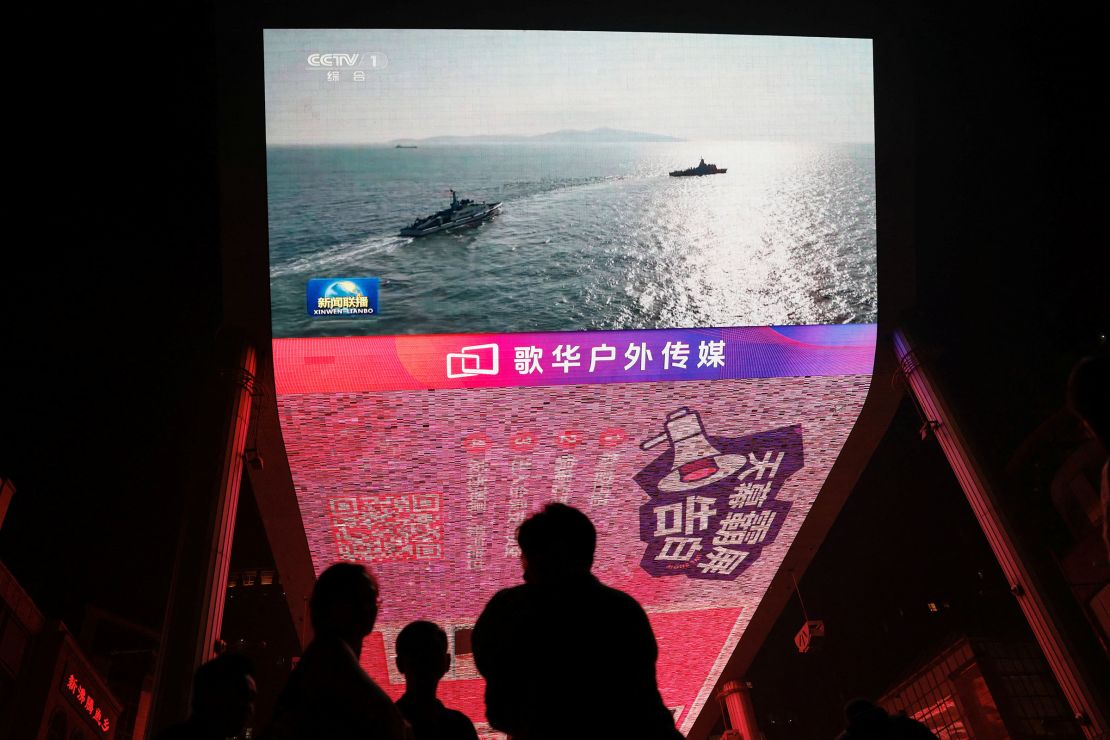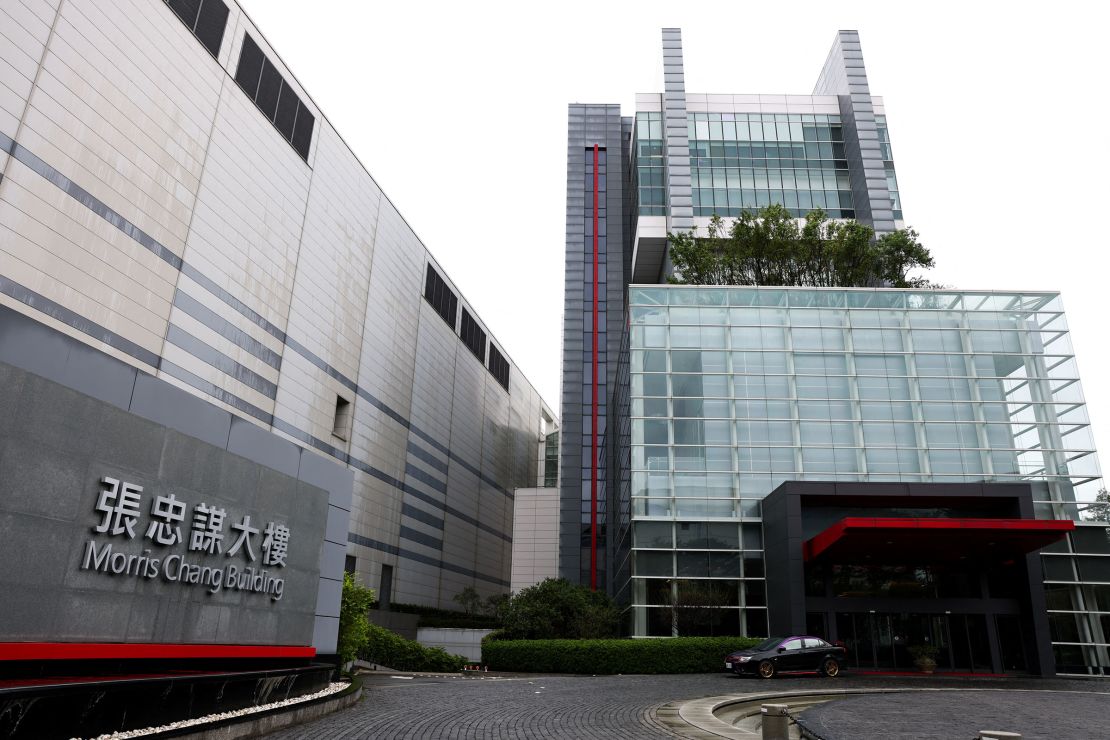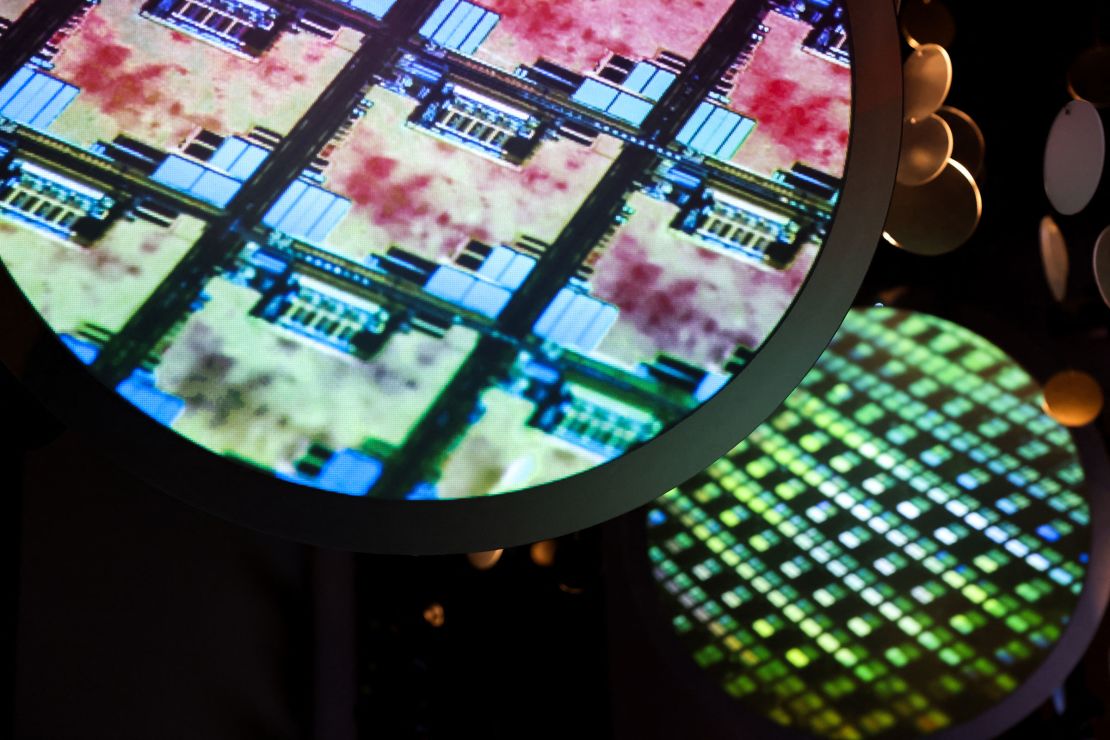Hong Kong/Taipei
CNN
—
It was a surprise ceremony at the White House presided over by President Donald Trump to unveil a $100 billion investment from what he called the world’s most powerful company, Taiwan Semiconductor Manufacturing Company (TSMC).
But nearly 8,000 miles away, the mood was far from celebratory. Instead, the shock announcement last week has reignited fears in Taiwan about losing its crown jewel, its world-beating semiconductor industry, to the US due to political pressure.
The island democracy’s former President Ma Ying-jeou wasted no time in accusing the ruling Democratic Progressive Party (DPP) of “selling TSMC” to Trump as a “protection fee.”
“This is a major national security crisis,” Ma, a member of the opposition Kuomintang (KMT), wrote on his Facebook page on March 4, shortly after the White House signing ceremony. It will “’have a significant negative impact on people’s confidence, cross-strait relations and Taiwan’s future geopolitical position.”
To reassure the public, Taiwan President Lai Ching-te appeared alongside TSMC CEO CC Wei last week at Taipei’s presidential office, saying the company’s US investment would not undermine its commitment to and planned expansion in its home base.
TSMC produces more than 90% of the world’s advanced microchips, which power everything from smartphones and artificial intelligence to weapons. That’s why many in Taiwan believe that global dependence on its semiconductors serves as a “silicon shield,” a deterrent against a potential Chinese invasion.
China’s ruling Communist Party claims Taiwan as part of its territory despite having never controlled it and has vowed to take control of the self-governing island, by force if necessary. Beijing has in recent years escalated its military activities around Taiwan, regularly flying fighter jets and conducting exercises in waters near the island.

Taiwan relies on US military and political support. Under the Taiwan Relations Act, the US is legally obligated to provide Taiwan with the means to defend itself against a possible attack by China.
But Trump’s recent rhetoric has cast uncertainty over the future of US-Taiwan relations. He has repeatedly accused Taiwan of “stealing” the US semiconductor industry, a claim that is widely disputed, while saying outright that Taiwan should pay the US for “protection.”
For many on the self-governing island, the phrase “Ukraine today, Taiwan tomorrow” has increasingly resonated in recent weeks as they watch Trump upend longstanding US policy by playing up Kremlin rhetoric and warming to Moscow, while alienating traditional European allies and Kyiv. Taiwanese see parallels between their democracy and Ukraine, with both facing existential threats from aggressive, expansionist neighbors.
Washington earlier this month abruptly suspended military aid to Ukraine following a heated exchange between Trump, Vice President JD Vance and Ukrainian President Volodymyr Zelensky at the White House, just hours after the cheerful TSMC ceremony. It reinstated aid this week after Ukraine accepted a 30-day US-proposed ceasefire. The White House has also pressed Zelensky to sign a deal giving the US access to Kyiv’s untapped mineral riches.
Tammy Chao, a retiree, expressed deep concern to CNN about Taiwan’s security after TSMC’s announcement, likening Trump’s approach to his handling of Ukraine. She described him as a “dealer” who might eventually treat Taiwan as a bargaining chip.
“Taiwan, pretty soon just like [what] he said to Zelensky, ‘you have no cards to play,’ and Taiwan is not gonna have cards to play,” she said. “TSMC was the best card.”
But others appear less concerned. Fred Lin, a finance industry professional, said he believed TSMC came to this decision prudently.
“Who doesn’t pay protection fees to the US? No doubt It is a form of protection fee, that we can understand, but that’s the reality of international politics,” he said.

Trump administration officials, however, have also said they need to dial down involvement in European security to focus on Asia – and the threat from China. Prior to his election, Vance was explicit in his concerns that US support for Ukraine could hinder its ability to aid Taiwan in the event of a Chinese attack.
Researchers say there are limits to comparisons between Ukraine and Taiwan’s security circumstances and believe the island’s security is influenced by multiple factors beyond its semiconductor industry, including China’s broader geopolitical ambition and Taiwan’s strategic location.
Whether China takes military action against Taiwan is ultimately driven by its core interests, which are not solely dependent on the island’s role in global chip production, said Min-yen Chiang, a nonresident fellow at the Research Institute for Democracy, Society, and Emerging Technology, a government-funded think tank in Taipei.
He referenced the time in 1950 when the US sent its Seventh Fleet to the Taiwan Strait early on during the Korean War to deter China from invading Taiwan. The strategic move by then-President Harry Truman neutralized the Taiwan Strait and ensured the Korean War did not trigger a wider conflict, maintaining stability in the Asia-Pacific region.
“Taiwan then had no semiconductor industry at all,” he said.
Last week, President Lai said Taipei did not “face any pressure from Washington” in doing the TSMC deal, which the company said was the biggest such investment in the US ever made by a non-American firm.
Standing next to him, Wei attributed the increased investment to “strong demand” from American customers such as Apple, Nvidia, AMD, Qualcomm and Broadcom that wanted to reduce potential supply chain risks by having chips made locally.
TSMC was awarded $6.5 billion in grants for its first three plants in Arizona under the bipartisan Chips Act, spearheaded by the Biden administration, which allocated $39 billion in federal funding to boost domestic semiconductor manufacturing.
“We are the best wherever we build our fabs,” Wei added, referring to semiconductor fabrication plants.
Along with the additional three manufacturing facilities, the new investment also promised two chip packaging plants and a research and development center to improve the production process technology.
Wei clarified that the development of the cutting-edge next generation chipmaking technology would remain in Taiwan and would still be 10 times bigger than the US facilities.
Semiconductor analysts applauded the company for making an “agile” decision.
TF International Securities analyst Ming-Chi Kuo praised TSMC in an online analysis, calling it the “most successful non-US company in negotiations with the Trump administration.”
“Though the $100 billion investment seems massive, the lack of details provides the flexibility for spending based on future conditions, softening the impact on profitability,” Kuo wrote.
TSMC’s investment has mostly alleviated Trump’s concerns, according to Eric Chen, an analyst at Digitimes Research, a market research firm. “But of course, we have no way of knowing when Trump might change his stance — he’s notorious for making sudden U-turns,” he said.

He also added that TSMC was “not afraid” of Trump potentially scrapping the subsidies from the Chips Act, stressing that the company’s decision to invest in the US was driven by customer needs.
TSMC’s $100 billion investment marks the latest in a wave of businesses committing massive sums to the US. But it stands out as one of the first major foreign firms to do so, and Trump claims more such investments are on the way.
In contrast to his predecessor Biden’s approach of incentivizing domestic investment through subsidies, Trump prefers to weaponize tariffs. So far, it has proven effective.
Trump has previously threatened to impose 25% tariffs on semiconductors, along with automobiles and pharmaceuticals as early as next month. At the announcement of TSMC’s investment, Commerce Secretary Howard Lutnick said the company chose to expand in the US due to the threat of tariffs, and were not given additional grants.
In late February, Apple pledged $500 billion to expand facilities, manufacturing and projects across the US over the next four years. Oracle, OpenAI and SoftBank announced in January that they would invest $500 billion to create a new company that would build artificial intelligence infrastructure in the US.
With TSMC’s new investment in the US, Trump is expected to turn up the heat on other major companies, said Chang-Tai Hsieh, an economist at the University of Chicago’s Booth School of Business.
He said it puts added pressure on Samsung and Intel, the two other major producers of computing and AI chips in the world.
South Korea’s SK Hynix, another key player in memory chips along with Samsung, are also expected to feel the squeeze. Samsung has previously pledged to invest $37 billion in Texas, while SK Hynix announced plans to build a $3.87 billion chip packaging plant in Indiana last year. Samsung and SK Hynix declined to comment.
Hsieh said it is obvious that companies like TSMC and others will have to “do whatever they can to make Trump happy.” But he also warned of the risks associated with such concessions.
“Once you agree to blackmail, then there’s no end of it,” he said.

